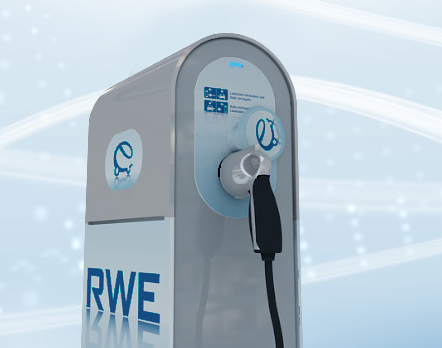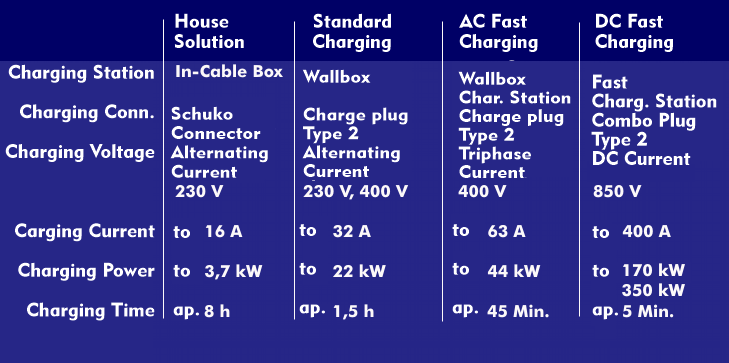electric vehicle supply equipment (automotive) (EVSE)
In the context discussed here, the term charging station refers to electric charging columns and fast charging systems for charging and fast charging of electric vehicle batteries.
The classic charging station is a device with which batteries of electric cars are charged. In the case of charging stations, a distinction is made between wall charging stations and in- cable control boxes( ICCB) used in the private sector, and public charging stations installed at gas stations, parking lots or in parking garages.
Depending on the charging system, charging stations, Electric Vehicle Supply Equipment (EVSE), use alternating current for certain charging processes and direct current for fast charging. For example, in the Combined Charging System( CCS), simple charging stations use single- phase AC voltage from the low-voltage grid, which is converted to DC voltage in the on- board charger( OBC). In the higher power classes of 11 kW and 22 kW, charging takes place with three-phase alternating current and, in the case of fast charging, with direct current. Chademo, on the other hand, works exclusively with direct current. Depending on the concept and charging mode, the charger can be located in the electric vehicle or in the charging station.
Structure of a charging station
The main components of a classic charging station are a powerful power supply unit that provides the charging power. The transition between the charging station and the electric vehicle is formed by the charging plugs on the station side and on the car side, which are connected to each other via the charging cable. The charging power of 20 kW to 40 kW is available at the charging plug. In fast charging systems, it can be up to 350 kW. Other components of charging stations are the communication module, the billing system for the charged energy and the battery management system, which protects the batteries from being charged too quickly and from overcharging.
The charging cable with the charging plugs is used to establish the connection between the charging station and the electric car. As soon as the charging cable is plugged into the sockets of the charging station and the electric car, the connection is established in several phases with the subsequent charging process. During this process, the vehicle electronics inform the charging station of the desired charging voltage and charging current. If the charging station can supply the requested power, the charging process starts. If the power is not available, the charging station reduces the charging power and communicates this to the battery management system. If there is insufficient contact between the plugs and the socket, the charging station socket is de-energized via an electrical interlock. This measure ensures that the operator cannot receive an electric shock and that the charging cable cannot be plugged in or disconnected under load. In addition to the electrical interlock, there is also a mechanical plug interlock that prevents intentional interruption of the charging process.
National and international standards
There are various international and national standards for charging stations. The standards describe charging plugs, vehicle devices and vehicle connectors for electric vehicles. They also deal with fast charging with up to 250 A alternating current and 400 A direct current(DC-High). There are also the standardsIEC 61851-1:2001 for conductive charging systems for electric vehicles and USCAR and the VDA AK guideline for automotive connectors, as well as SAE 1772. In addition to conventional charging technology, there is smart charging, in which the lithium-ion battery to be charged communicates with the charging station. This concept is described in ISO 15118.
As far as the different charging systems are concerned, the European Union prescribes the combo plug for the CCS charging system in the case of fast charging. Since the Japanese CHAdeMO charging system is widely used worldwide, there are charging stations that are also equipped with the CHAdeMO charging plug in addition to the normal charging plug and the combo charging plug. These are then referred to as triple charger stations.
Charging with authentication and billing
In the case of charging at public charging stations, a charging infrastructure ensures charging, authentication of the electric vehicle or its owner and billing of the electricity costs. In this concept, after authentication, the charging station is released so that the battery can be charged. The authentication data is transmitted to the corresponding contractual partner, who bills the customer for the electricity costs. The release can be done via code locks, authorization cards, RFID or via the smartphone. The Open Charge Point Protocol( OCPP) is favored as the authentication protocol.


